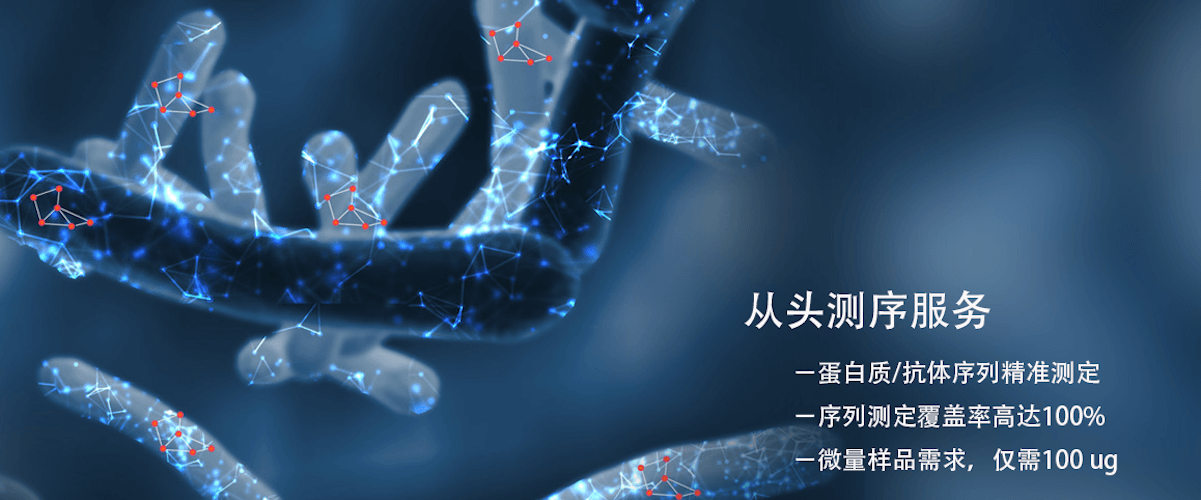Small Molecule Drug Target Identification and Validation
In the process of modern drug discovery and development, drug targets and modes of action remain the two biggest challenges. The correct drug target is not only related to the efficacy and specificity of the drug but also involves drug safety and potential side effects. A drug target refers to the direct binding site of a drug to a biomolecule within the body, mainly including receptors, enzymes, ion channels, transporters, nucleic acids, and other biomolecules. Identifying the target of drug action is crucial for the design of new drugs, as it helps us understand the mechanism of drug action, establish the connection between drug activity and biological function, predict possible side effects and resistance mechanisms, and discover new therapeutic targets. Through target identification, the efficiency of the drug development process and the safety of marketed drugs can be ensured.
New drug targets are a breakthrough in the discovery of new drugs, and finding new drug targets has become the focus of intense competition in innovative drug development today. From the perspective of drug development, the effectiveness of a drug largely depends on its target. Currently, two main drug discovery strategies are used: phenotype-based drug discovery and target-based drug discovery. Phenotype-based drug discovery screens small molecules or peptides in cells, tissues, or organs based on existing pharmacology. Target-based drug discovery involves first identifying the target and then identifying active molecules. With the rapid development of molecular biology, target-based drug discovery paradigms have replaced traditional phenotype-based methods because they can enhance screening capabilities and define rational drug discovery schemes.
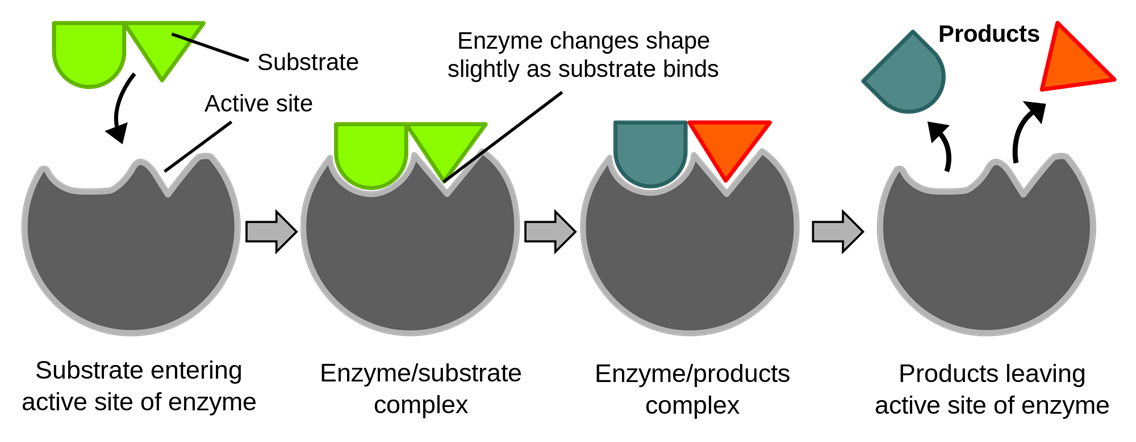
Enzymes as drug targets
Baitepack Biotechnology (BTP), relying on a high-resolution mass spectrometry platform, combined with affinity chromatography and active site-directed probe technology, has developed and validated multiple target-based small molecule drug target identification platforms. It provides comprehensive scientific research services for the identification of molecular interactions, including protein-protein interactions (PPI) and protein-small molecule drug interactions, accurately identifying and validating the action targets of small molecule drugs, thereby aiding the discovery and development of innovative drugs. Baitepack Biotechnology's target-based small molecule drug target identification solutions include:
1. Based on ABPPstrategy for small molecule drug target identification and validation
Activity-based protein profiling (ABPP) combines activity-based probes with proteomics techniques,to identify protein targets of small molecules, including the active sites of target proteins.ABPP utilizes activity site-directed chemical probes consisting of two elements: 1) an activity site-directed reactive group for binding and covalent labeling of specific subsets (or families) of catalytically related enzymes, and 2) a reporter tag (e.g., fluorophore, biotin, alkyne, or azide) for detection/quantification and/or enrichment/identification of labeled enzymes. In principle, the active group of small molecules interacts directly with the target protein and the reporter group to facilitate target capture. Depending on the chosen reporter group, different follow-up experiments can be conducted. For example, fluorescent groups can be used for rapid gel screening and localization of small molecules in cells or animals, while biotin can be used for protein enrichment followed by mass spectrometry to identify target proteins.

Front Pharmacol. 2018 Apr 9;9:353.
Activity-based protein profiling workflow
Service content

Technical advantages
1) Specificity: Highly specific recognition of active proteins through targeted labeling of active enzymes with specific activity probes;
2) Functional analysis: Capable of directly assessing the enzymatic activity status of proteins, rather than just their expression levels or structural changes;
3) Real-time monitoring: Able to monitor enzyme activity under physiological conditions in cells, capturing the immediate effects of drugs;
4) Non-invasive labeling: The covalent binding of the probe to proteins is non-invasive, not interfering with their normal functions, maintaining the physiological authenticity of biological samples;
5) Sample applicability: ABPP technology can be used for cell lysates, live cells, animal lysates, and even live animals.
2.Target-based small molecule drug targetidentification

Nat Prod Rep. 2016; 33(5):719-730.
Workflow for target-based small molecule drug target identification
Service content

Technical advantages
1) Global and unbiased: Can explore small molecule-protein interactions at the whole proteome level without bias;
2) Intracellular action analysis: Can capture genuine drug-protein interactions in the physiological environment of cells, reflecting the actual effects of drugs;
3) Quantitative: Can provide quantitative information about the strength and stability of drug-target interactions;
4) Data reliability: MS-based thermal stability profiling can be performed at multiple temperature points simultaneously, reducing bias caused by experimental setup, and improving data reproducibility and reliability.
3. Target-based small molecule drug target identification using the LiP-MS strategy
Limited Proteolysis-Mass Spectrometry (LiP-MS) combines protein limited proteolysis with mass spectrometry analysis. In the process of small molecule drug target identification, incubating small molecule drugs with their potential protein targets induces conformational changes in the proteins upon binding. This change affects the proteolytic pattern of the protein. By comparing the proteolytic fragments of proteins under treated and untreated conditions, the protein regions interacting with the drug can be identified, allowing the inference of the drug's target. This is extremely important for elucidating drug mechanisms and discovering new drugs, especially in the targeted design of drug molecules and the optimization of drug efficacy.
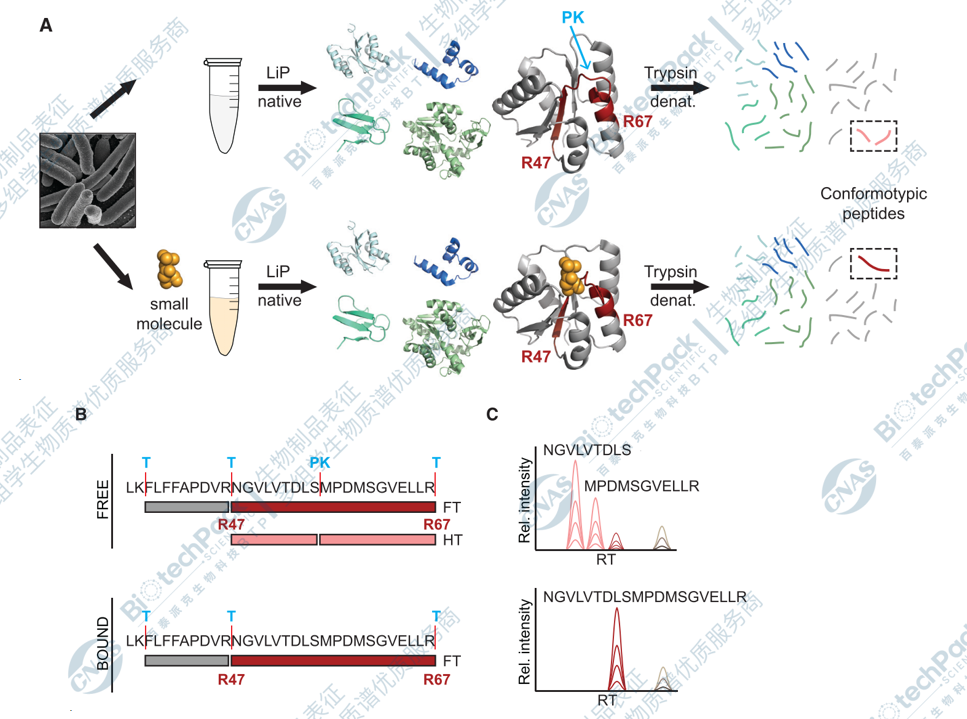
Piazza, et al. 2018, Cell 172, 358-372.
Workflow for target-based small molecule drug target identification using the LiP-MS strategy
Service content
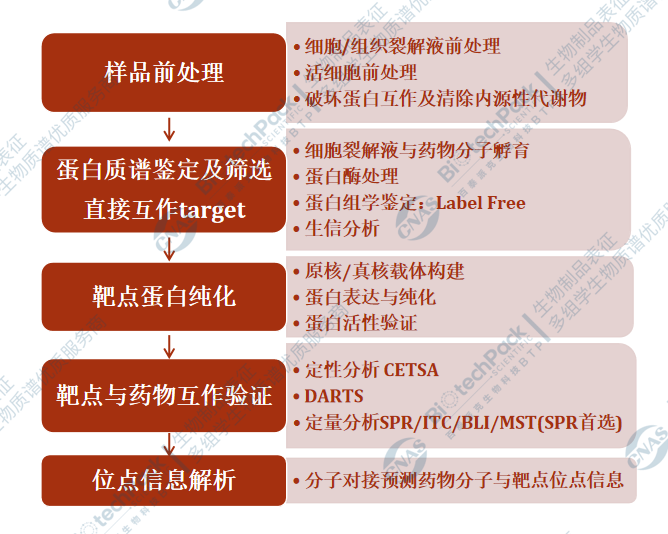
Technical advantages
1) High throughput and high sensitivity: LiP-MS can analyze thousands of protein samples, identifying even low-abundance protein targets;
2) No prior knowledge required: This method does not require pre-existing information about potential targets and can discover unknown drug action points across a wide range of proteins;
3) Applicability in vitro and in vivo: LiP-MS can be performed both in vitro and in vivo, providing more information about how drugs interact with targets;
4) Structural dynamics analysis: LiP-MS can provide dynamic insights into protein structural changes upon binding with small molecules.
4. Target-based small molecule drug target identification using the DARTS strategy
Drug affinity responsive target stability (DARTS) is a relatively rapid and direct method for identifying the potential protein targets of small molecules. It relies on the protection conferred to target proteins from proteolysis by interaction with small molecules. DARTS is performed by treating aliquots of cell lysates with the compound of interest, a carrier control, or an inactive analog, followed by limited digestion of proteins in the lysates with proteases. Samples are then separated by SDS-PAGE and stained to identify protein bands protected from proteolysis by the small molecule. Finally, mass spectrometry (MS) is used to identify the proteins present in each band. This unbiased approach has been successfully used to identify new protein targets for natural products and other bioactive small molecules.
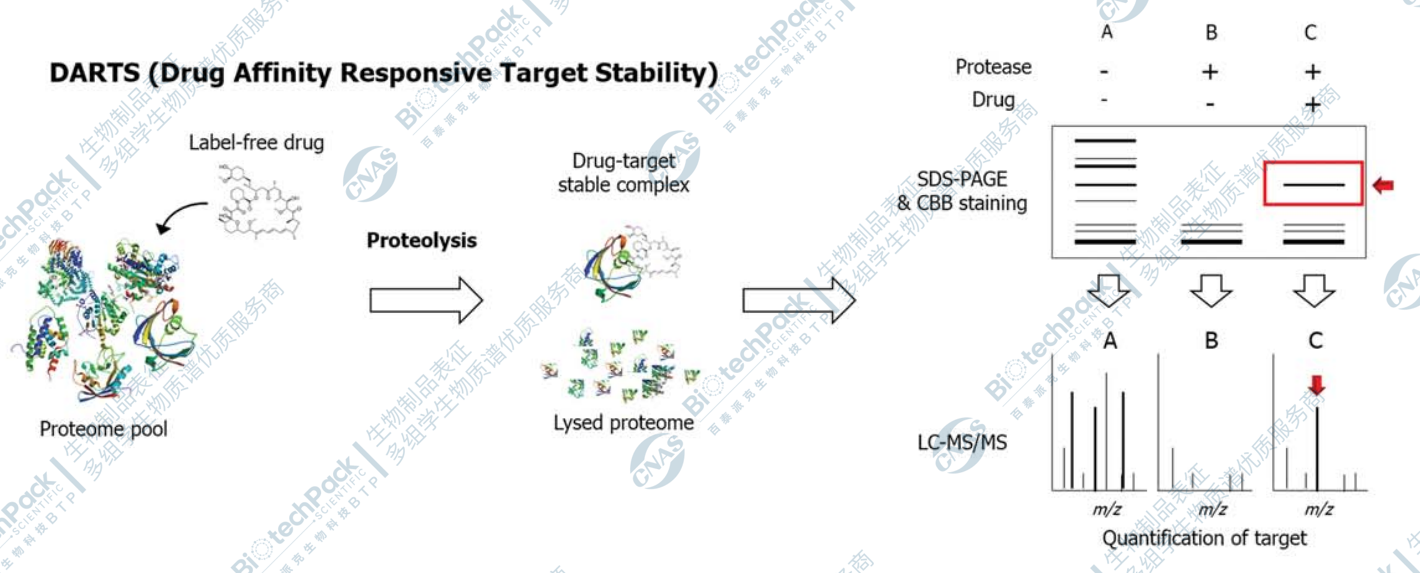
Nat Prod Rep. 2016; 33(5):719-730.
Workflow for target-based small molecule drug target identification using the DARTS strategy
Service content
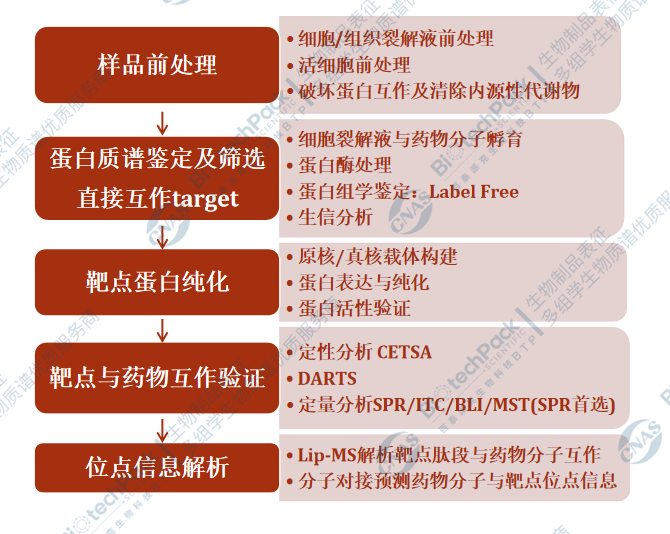
Technical advantages
1) Non-labeling: The major advantage of DARTS is its ability to use natural small molecules without requiring fixation or modification (e.g., incorporation of biotin, fluorescence, or radioactive isotopes), avoiding potential issues that might affect drug activity or protein structure;
2) Directness: Can be conducted directly in complex biological samples without protein purification, making data closer to physiological conditions;
3) Fidelity: Able to preserve the physiological interactions between drugs and their potential targets, providing more authentic drug-target interaction information;
4) Broad applicability: Can be used for any type of small molecule drug, regardless of its chemical properties, and has been widely applied to track proteins from animals, fungi, bacteria, and plants;
5) Timeliness and cost-effectiveness: The experimental steps are relatively simple and quick, allowing results to be obtained in a shorter time without the need for expensive equipment and reagents, making it more economical.
Application case studies
1. Identification of direct action targets of the antidiabetic drug metformin using ABPP technology:
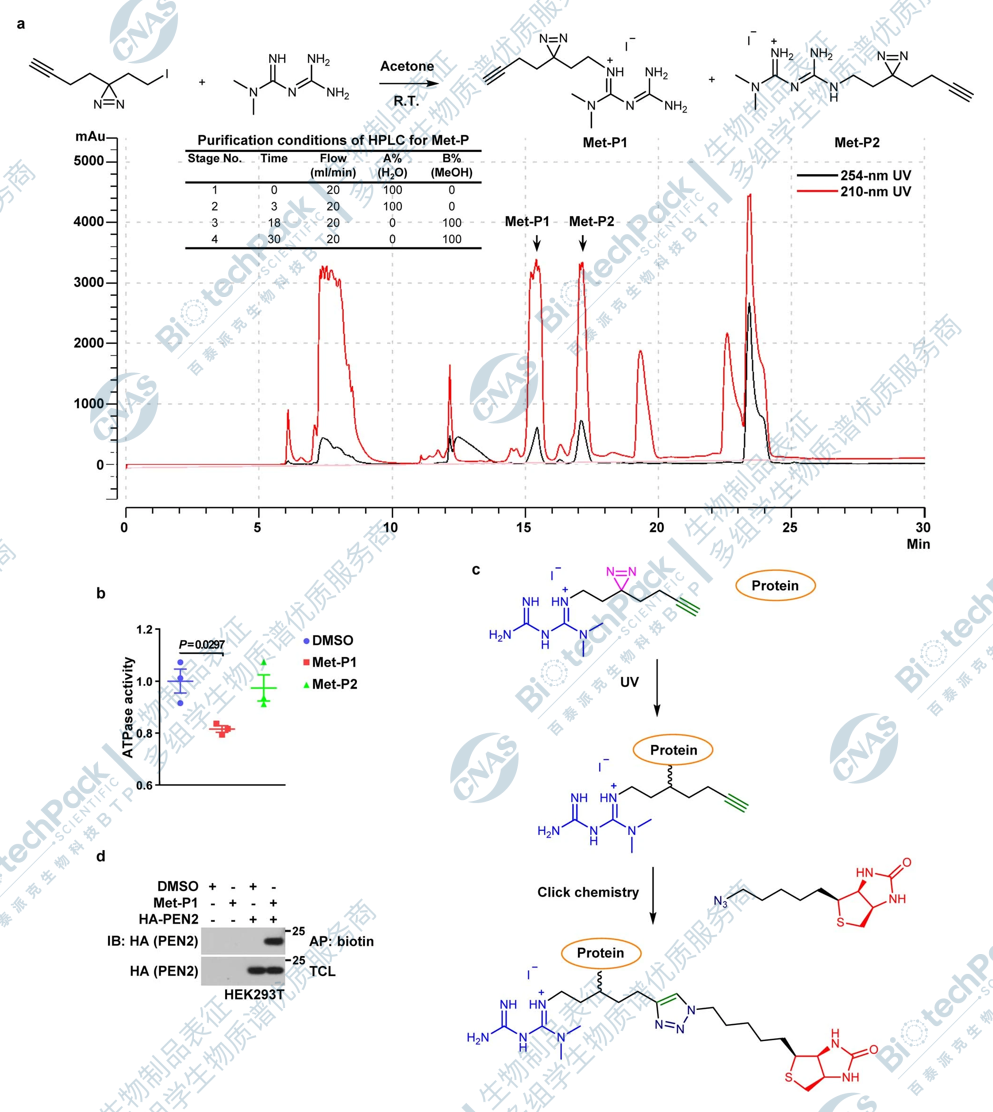
Ma, T.; et al. Nature. 2022.
Identification of metformin-interacting proteins using metformin probes
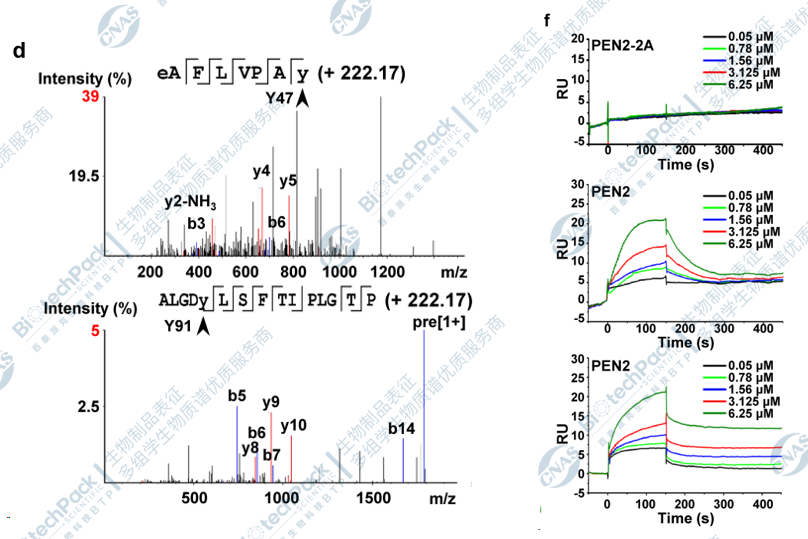
Ma, T.; et al. Nature. 2022.
Determination of the binding site of PEN2 with metformin using mass spectrometry, followed by SPR analysis of its interaction with metformin
2. Comprehensive characterization of ligand-induced changes in plasma membrane protein abundance and thermal stability using MS-based thermal stability profiling to study drug binding to extracellular receptors and transport proteins:
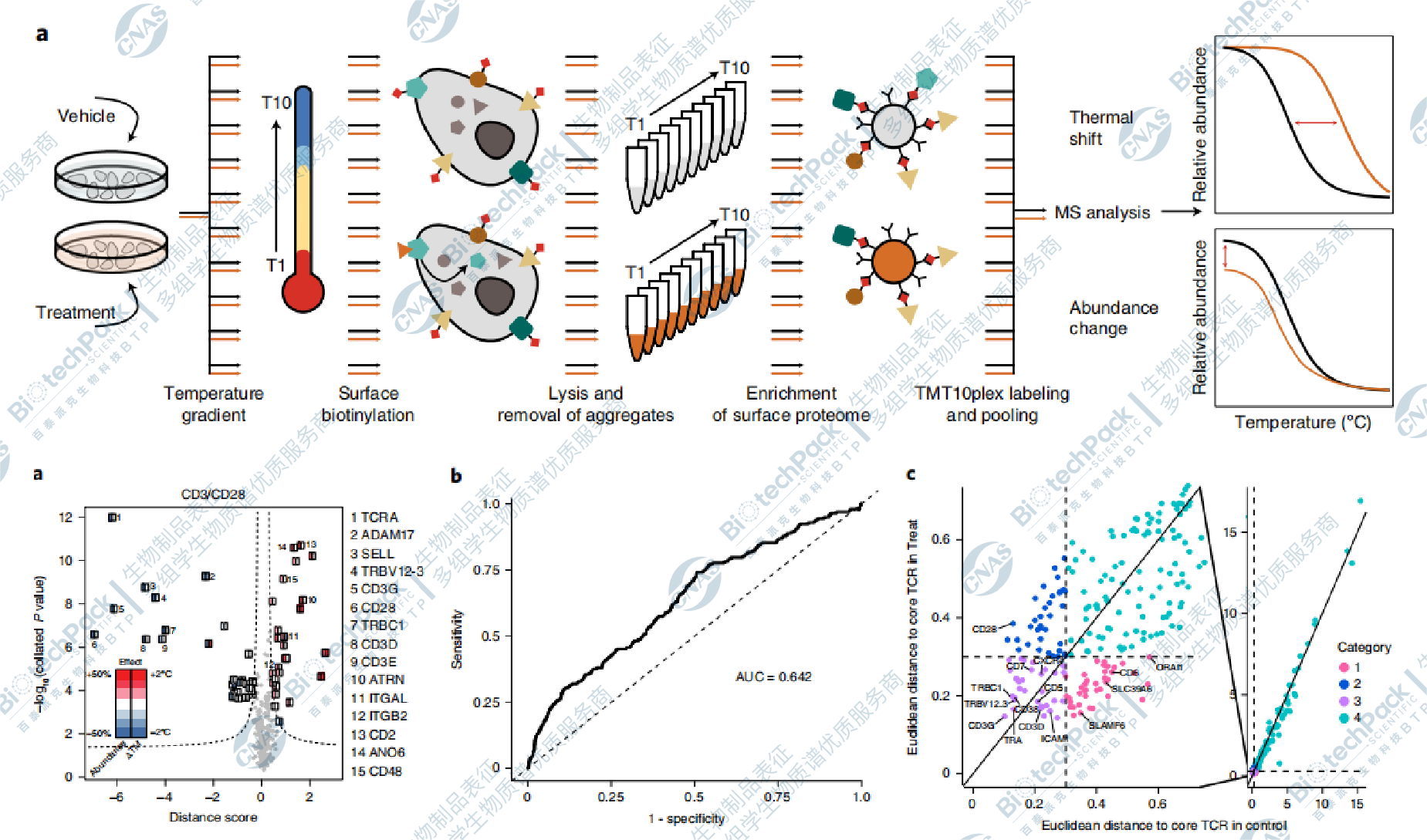
Kalxdorf, M.; et al. Nat Methods. 2021.
3. Screening for novel proteins and complexes associated with aging in cerebrospinal fluid using LiP-MS:
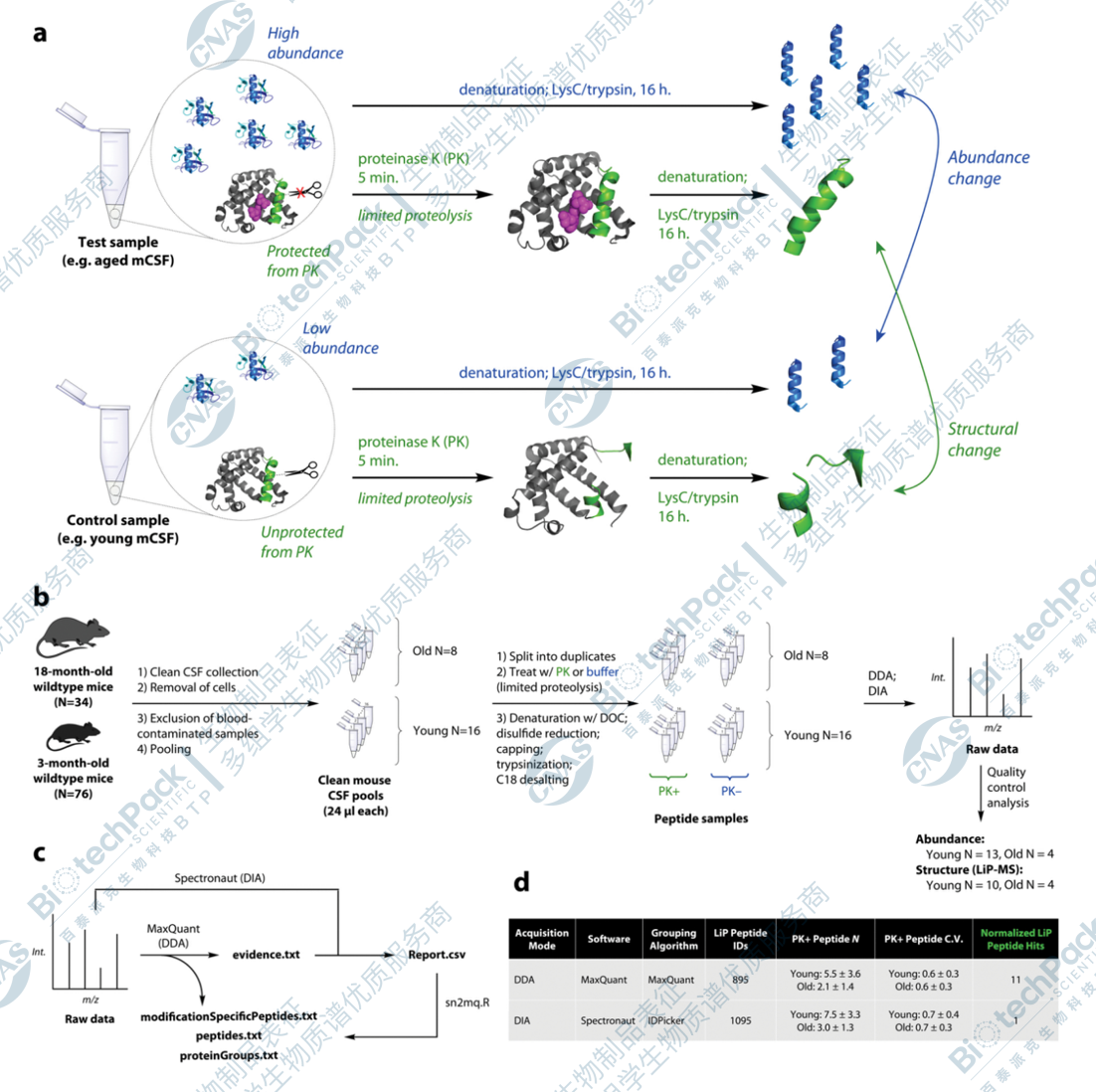
Shuken, S. R., et al. Nat Aging. 2022.
4. Revealing filamin as the biological target for the anticancer flavonoid artemisinin using DARTS technology:
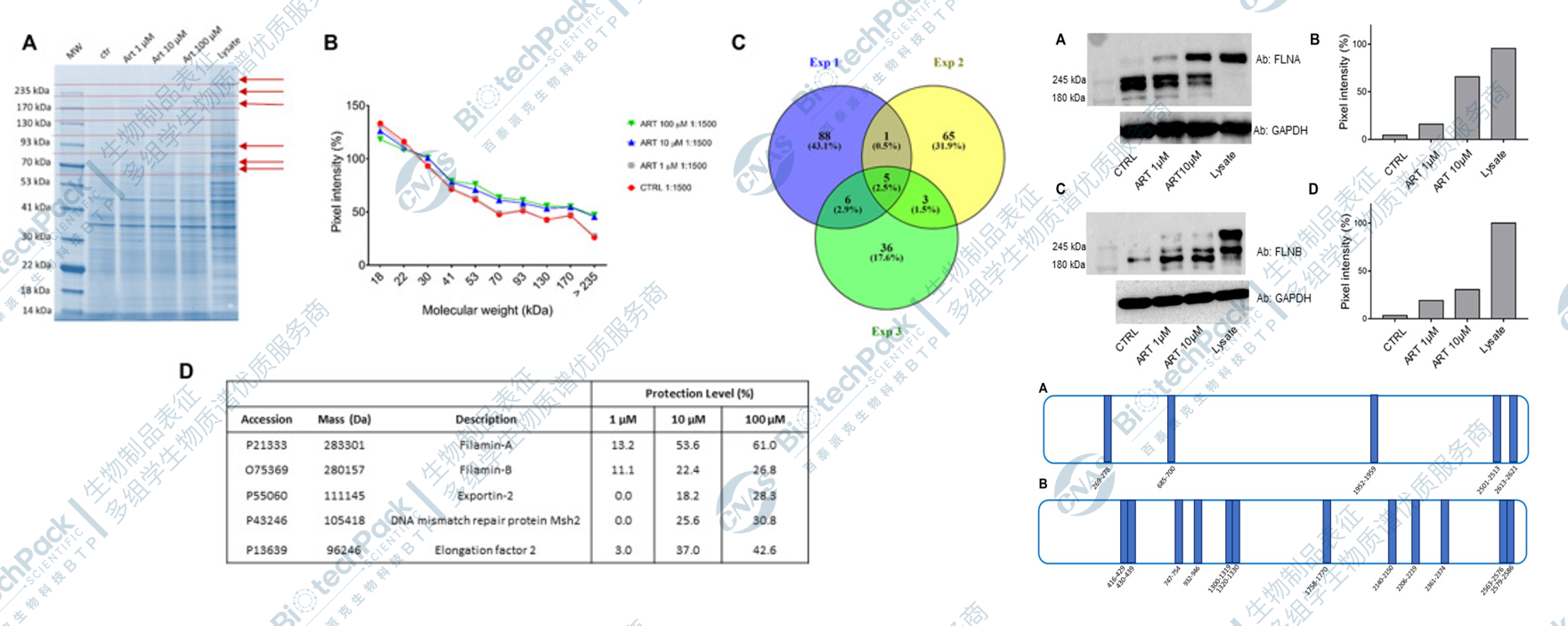
Ferraro G,et al. Front Mol Biosci. 2022.
Related services
PROTAC drug off-target analysis
Protein interaction mass spectrometry analysis
Protein interaction analysis using co-immunoprecipitation (CO-IP) combined with mass spectrometry
SILAC combined with co-immunoprecipitation and mass spectrometry for protein interaction analysis
How to order?


